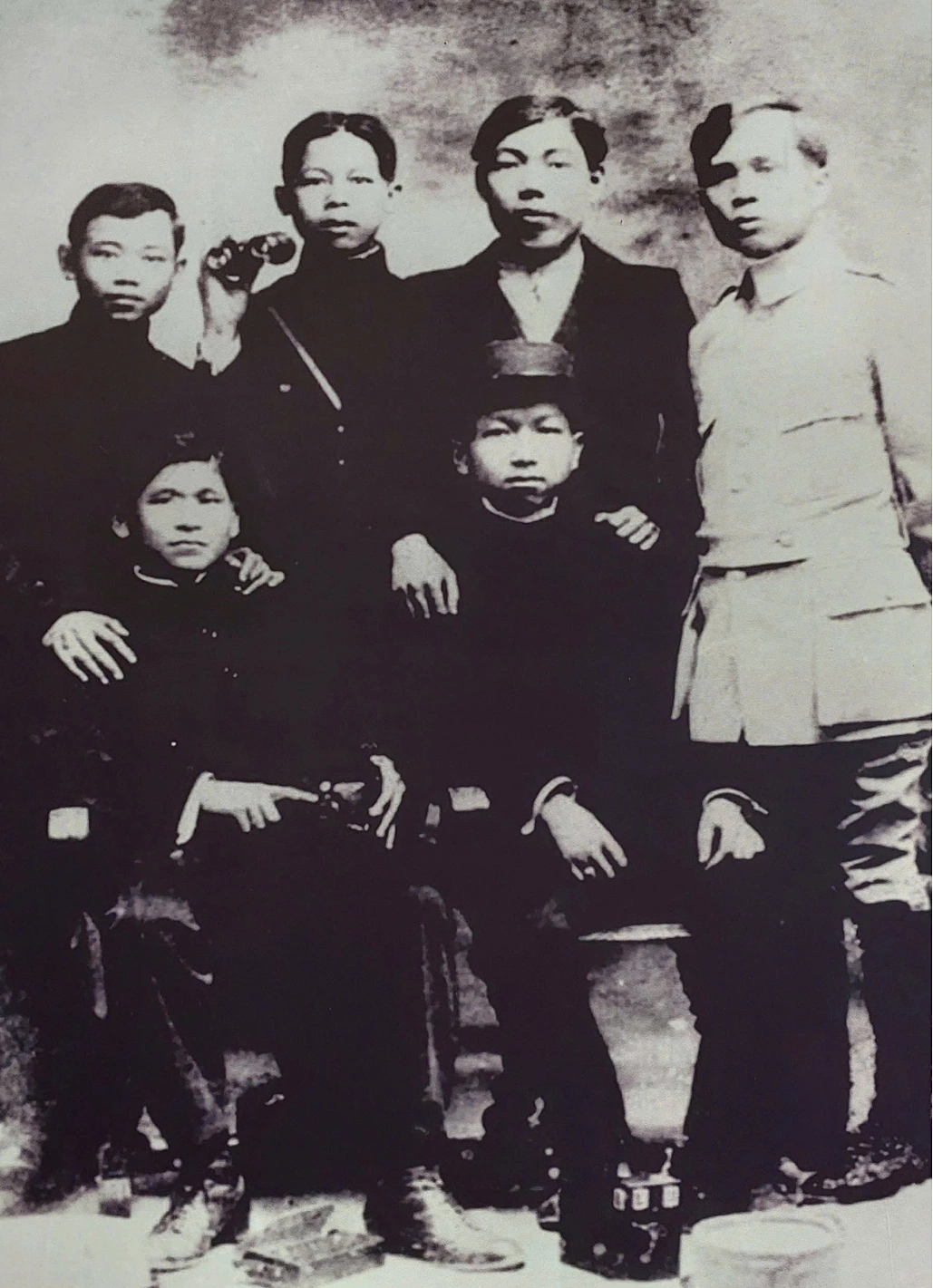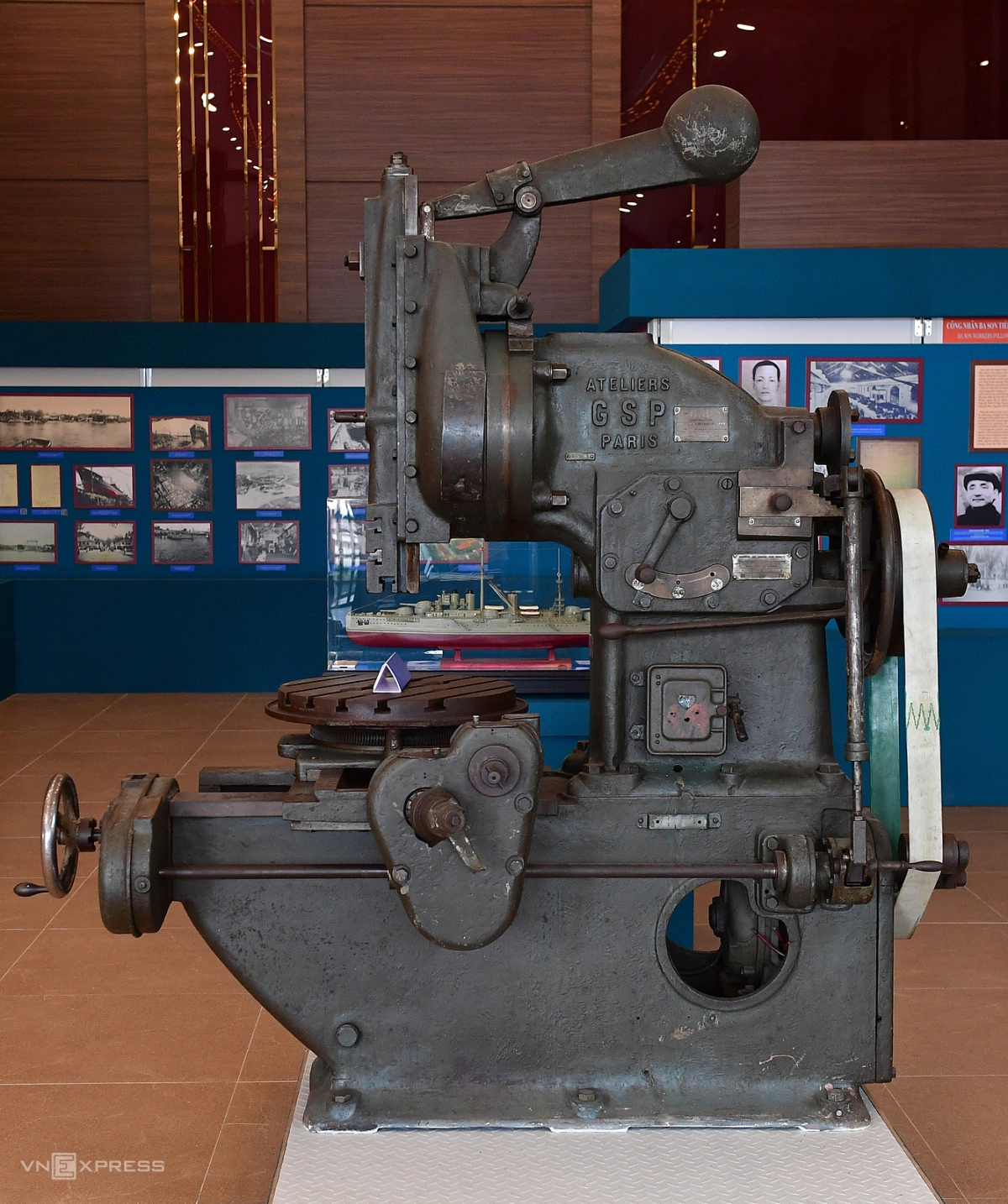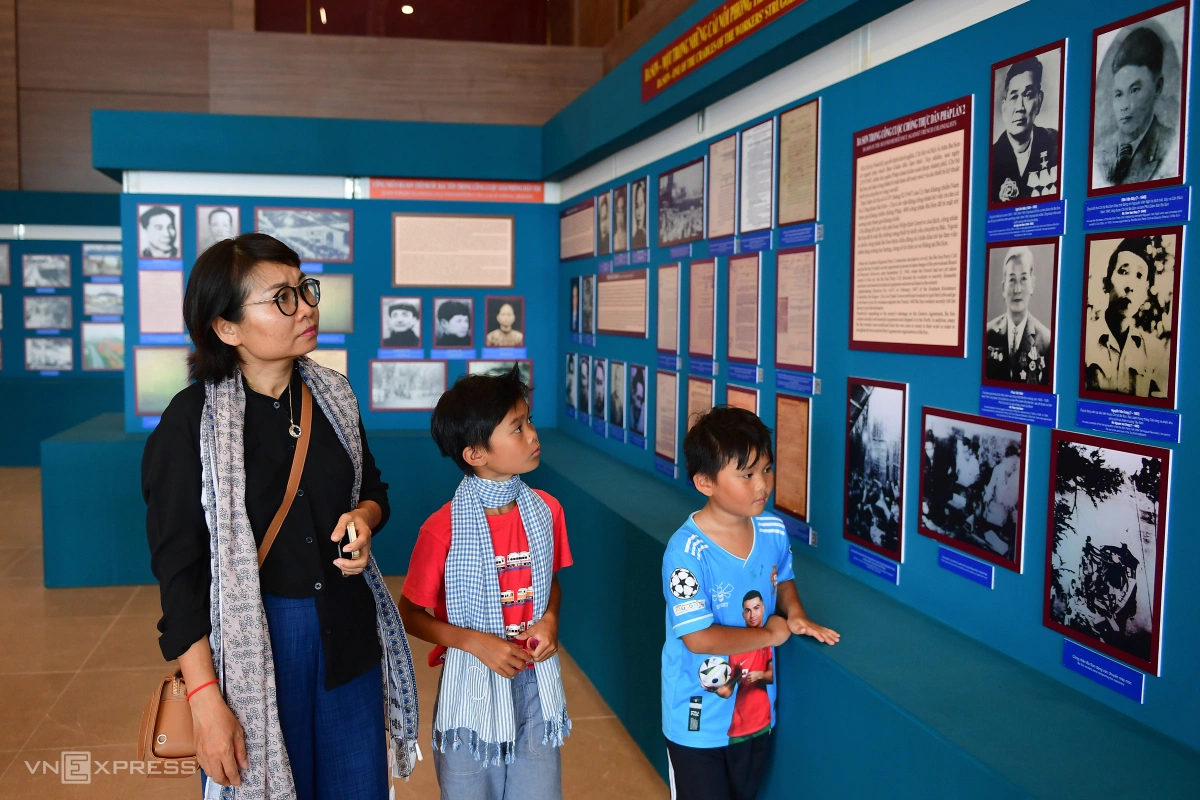The Ton Duc Thang Museum in District 1, Ho Chi Minh City is collaborating with shipbuilder Ba Son Corporation to hold an exhibition titled "Ba Son – The Timeline," in celebration of President Ton Duc Thang's 136th birthday.
The exhibition, running from Aug. 20 until the end of May 2025, showcases 180 documents and artifacts related to the formation and development of Ba Son, the workers' movement at the shipyard under Ton Duc Thang's leadership in the early 20th century, and Ba Son's achievements post-national reunification.
The image above depicts Ba Son between 1900 and 1920. The shipyard, initially named Chu Su (also known as the naval yard), was established in 1791 during the reign of King Gia Long, on the Ba Son area (now Ben Nghe Ward), for shipbuilding and repairs. In 1863, the French turned it into a shipyard named Arsenal de Saigon.
The area is now centrally located in Ho Chi Minh City, along the Saigon River, bordered by Ton Duc Thang and Nguyen Huu Canh Streets. This area includes an underground section of Metro Line No. 1, which is nearly completed and scheduled for commercial operation later this year.
The shipyard is situated where the Saigon River meets the Thi Nghe Canal.
In the photo, ships were moving into the dry dock, meaning a dock that can be drained of water to allow the inspection and repair of a ship's hull, at Ba Son.
The large dry dock at the shipyard, constructed in 1888, is the only one of its kind at Ba Son that remains almost intact.
The structure measures 156 meters long, 21 meters wide, and 10 meters deep, with a stone foundation and walls made of sandstone, using materials imported from France.
To the south of the dry dock is the shipyard, with mechanical workshops to the east and dockyard facilities to the west.
The armored ship named after Albert Sarraut, the then Governor-General of French Indochina, was built at Ba Son, measuring 90 meters long, 12 meters wide, and weighing 3,100 tons.
After its launch in April 1921, the Albert Sarraut came under the control of the French Governor-General of Indochina and was managed by the Indochina Fleet.
Workers and French owners at Ba Son Shipyard in 1925-1926.
During that period, it was the largest shipyard in Indochina, housing many workers and laborers, becoming the cradle of the working class and the starting point of the Vietnamese proletarian revolution (1915-1928).
Among the shipyard workers, Ton Duc Thang was the most prominent. He founded the “Red Union”in 1921 to support and defend workers' rights.
President Ton Duc Thang (R, 1888-1980) with Vietnamese soldiers at the Toulon naval port in southern France in 1917. He was from Long Xuyen City in the Mekong Delta province of An Giang.
At 24, he joined a workers' strike organization and became involved in revolutionary activities. At the end of 1929, he was arrested by French colonialists, sentenced to 20 years of hard labor and exiled to Con Dao Island off Vietnam’s southern coast.
After the August Revolution, a revolution against the Empire of Vietnam and the Empire of Japan in the latter half of August 1945, he returned to the mainland to join the Southern Resistance Committee, taking on many responsibilities assigned by the Party and state.
He served as Vietnam's second president from 1969 until his death in 1980, having been vice president from 1960 to 1969.

The ongoing exhibition also features artifacts related to Ba Son Shipyard. The image shows a testing machine (for checking materials like iron, steel, and stone) used by President Ton Duc Thang during his time as a worker at the shipyard in 1909-1912.
A model of the Jules Michelet warship symbolizes the workers' movement at Ba Son.
On Aug. 4, 1925, the French cruiser Jules Michelet broke down on its way to China to suppress revolutionary movements and had to dock at Ba Son for repairs.
Upon learning this, Ton Duc Thang rallied union members at the shipyard to strike, aiming to delay the ship and thwart the plan to suppress the global revolutionary movement. The strike lasted four months, gaining significant attention and resolving the workers' demands.
The exhibition has attracted many visitors.
Bringing her two young children for a visit, Ong Thoai Linh (L) from Go Vap District said her children are very interested in science and history, so she wanted them to learn more about the nation's historical traditions.
The exhibition runs from Aug. 20 until the end of May 2025.
















